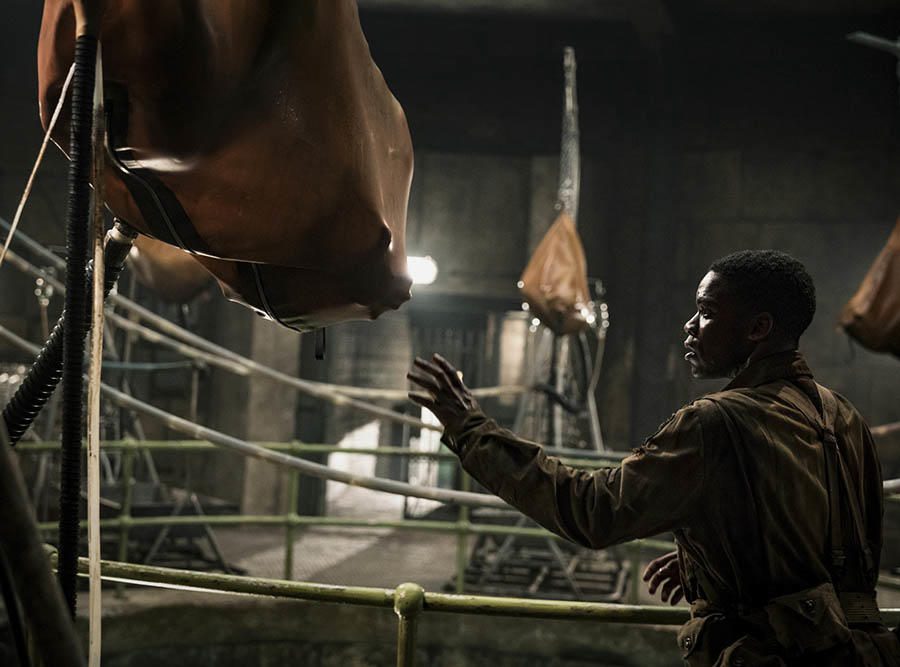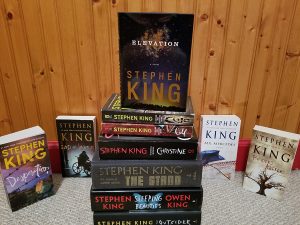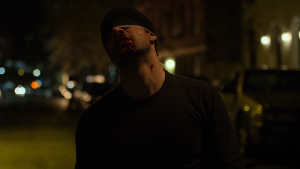The ‘Overlord’ of outmoded action
Boyce, the mediocre action hero of Nazi-zombie thriller “Overlord,” explores a secret lab where the dead have been revived as vicious monsters. Like the creatures in it, this movie was worse than the idea that inspired it, and never should have been created.
November 17, 2018
Horrible monsters. Secret laboratories. Heartless Nazis. Strong and pure American soldiers. Big explosions. Other sloppy clichés. If you love all of these things and more, all together in one big, poorly-executed package, “Overlord” is the movie you need to see.
Nazi zombies: the perfect villains. One half is a heartless, soulless killer, and the other half is a zombie. Video games such as the “Call of Duty: Black Ops” series feature Nazi zombies as a massively popular game mode. Now the trend has reached the big screen with “Overlord,” a lackluster action piece that brings the popular thematic elements of a WWII movie and a zombie thriller together, never achieving greatness in either. It’s cheesy, it’s gorey, it’s slow to start, and it’s quick to end.
“Overlord” follows a small group of U.S. paratroopers on the eve of D-day as they parachute into France to disable a German communications tower. The characters who survive the anti-aircraft fire and make it to the ground include tough-guy leader Ford, loudmouthed jerk Tibbet, incapable war photographer Chase, and the gentle-hearted hero Boyce. Shortly after landing, the four men meet the token female character, a French woman named Chloe. Chloe joins the group and successfully redirects screen time toward uninteresting subplots regarding her kid brother and a romance with Boyce that never even follows through.
After the twenty minutes of exposition, once the crew of bumbling stereotypes has arrived in the unnamed town where the Nazi base is, the zombie storyline begins. It takes a while, but eventually Boyce, who has emerged as the main character despite being the least engaging, finds his way into the Nazi compound through sheer dumb luck. Once inside, he wanders the halls of the base, discovering a plethora of grotesque experiments. Boyce discovers that the Nazis are working toward reviving the dead with a mysterious serum. He gets away through the sewers, a classic among cheap plot devices, and takes a syringe of the mysterious serum with him.
With the film approaching its halfway point, the crew captures a Nazi soldier, who shoots the harmless photographer, Chase, killing him. Boyce revives Chase with the serum, and Chase promptly becomes terrifyingly deformed, immensely strong, and dangerously insane. Before he can do anything too cool, he is sadly killed by Ford and Boyce. The Nazi soldier escapes and takes the serum while still alive, and from here, the movie thematically splits apart, with the remaining screen time half devoted to a “Saving Private Ryan” style gunfight, and the other half dedicated to the Nazi-zombie horror flick audiences expected.
The advertisements, trailers, and posters for “Overlord” suggested it would be a relentless, fast-paced thriller about American soldiers fighting Nazi zombies. Sadly, the actual movie’s plot felt sloppily constructed and only delivered on the zombie action in the back half of the film, and even then only sparingly. Between stereotype heroes, lackluster villains, and a multitude of cheesy plot directions and devices, “Overlord” feels like another cog in an over-greased profit-making machine that no longer serves audiences.
It became clear that the best thing this movie has to offer is its action sequences, which are more often than not loud and intense scenes of bloody violence. Now I’m as guilty as anyone when it comes to the mindless consumption of over-the-top action, and I only noticed it in “Overlord” because nothing else in the movie was entertaining, but I was unsettled nonetheless. Violence is not enough, nor should it be enough, to reel in an audience. There needs to be real quality somewhere to justify the movie’s creation. Otherwise, we’re watching violence for violence’s sake, a cultural trend that has no valuable consequences.
Bloody violence in movies (especially one that’s R-rated, like “Overlord”) can serve a purpose as a shock factor, or to scare audiences and remind them of the very real danger the characters are in. Blood also adds realism, which is often a missing component of quick-paced action B-listers. Movies should just be mindful of crossing the line and becoming gratuitous gore-fests.
Although it’s a loud, roughly-constructed movie that couldn’t live up to its own promises, “Overlord” isn’t entirely unwatchable. More went wrong then right, but several aspects of the movie were great on their own and deserve a moment of praise. The scene of Chase’s zombie transformation was legitimately chilling, thanks to a wonderful performance from Iain De Caestecker and the special effects dedicated to creating a horrifying monster from his previously harmless character. And although “Overlord”’s opening sequence is too reminiscent of other WWII films, the ensuing sequence of Boyce skydiving through the night sky in an active war zone felt original and was skillfully crafted to be both chaotic and thrilling.
As the holiday season approaches, the movies will be swamped by a multitude of high-quality new releases that will be enjoyable for everyone. Don’t hesitate to skip out on “Overlord” and go see those instead.









